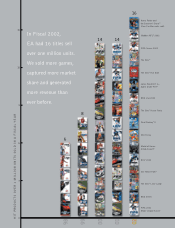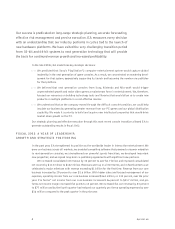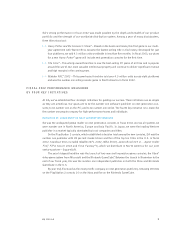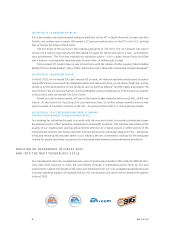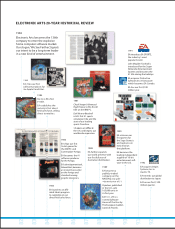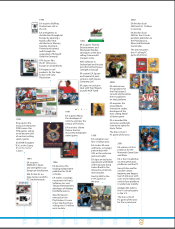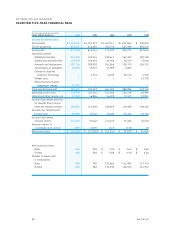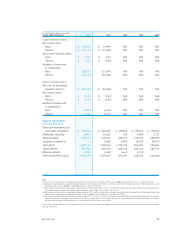Electronic Arts 2002 Annual Report Download - page 8
Download and view the complete annual report
Please find page 8 of the 2002 Electronic Arts annual report below. You can navigate through the pages in the report by either clicking on the pages listed below, or by using the keyword search tool below to find specific information within the annual report.
Our success is predicated on long-range strategic planning, accurate forecasting,
effective risk management and precise execution. EA measures every decision
with an understanding that our industry performs in cycles tied to the launch of
new hardware platforms. We have exited the very challenging transition period
from 32-bit and 64-bit systems to next generation technology that will provide
the basis for continued revenue growth and increased profitability.
In the late 1990s, EA made three key strategic decisions:
|•••»We predicted that Sony’s PlayStation®2 computer entertainment system would capture global
leadership in the next generation of game consoles. As a result, we concentrated on mastering devel-
opment for that system, aggressively supporting its launch and becoming the number one publisher
for that platform.
|•••»We believed that next generation consoles from Sony, Nintendo and Microsoft would trigger
unprecedented growth and make video games a mainstream force in entertainment. We, therefore,
focused our resources on building technology tools and libraries that would allow us to create new
products on multiple platforms in a cost-effective manner.
|•••»We understood that as the company moved through the difficult console transition, we could help
insulate our business by generating greater revenue from our PC games and our global distribution
capability. We made it a priority to build and acquire new intellectual properties that would drive
market share growth on the PC.
Our strategic planning and effective execution through this most recent console transition allowed EA to
generate outstanding results in fiscal 2002.
FISCAL 2002: A YEAR OF LEADERSHIP,
GROWTH AND STRATEGIC POSITIONING
In the past year, EA strengthened its position as the worldwide leader in interactive entertainment. We
grew our business across all markets; we provided compelling software that powered consumer migration
to next generation consoles; we strengthened our powerful sports franchises; we developed important
new properties; and we signed long-term co-publishing agreements with significant new partners.
We increased consolidated net revenue by 30 percent to over $1.7 billion and improved consolidated
net income by $113 million to $102 million. Revenues were up in all territories, and in North America we
celebrated a major milestone with revenue exceeding $1 billion for the first time. Revenue from our core
business increased by 29 percent to over $1.6 billion. With higher sales and focused management of our
expenses, operating income from our core business increased $163 million, or 132 percent, over the prior
year. Pro forma* net income from our core business increased 106 percent to $217 million, and pro
forma net income margin increased five points to 13 percent. We increased EA.com revenue by 83 percent
to $77 million and by the fourth quarter had reduced our quarterly pro forma operating expenses by over
$16 million compared to the peak quarter in the prior year.
EA 2002 AR
4





